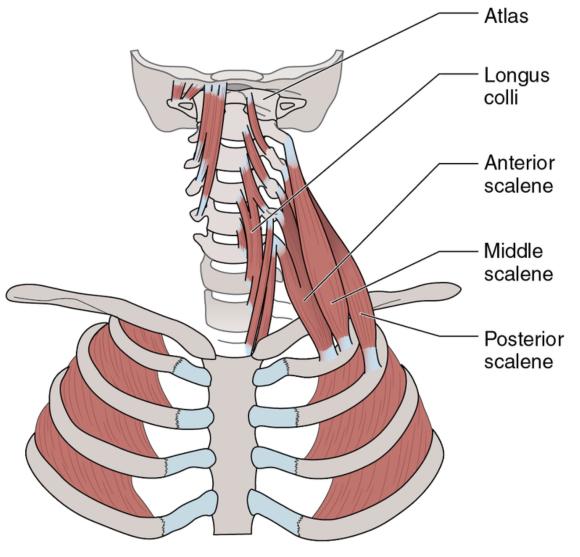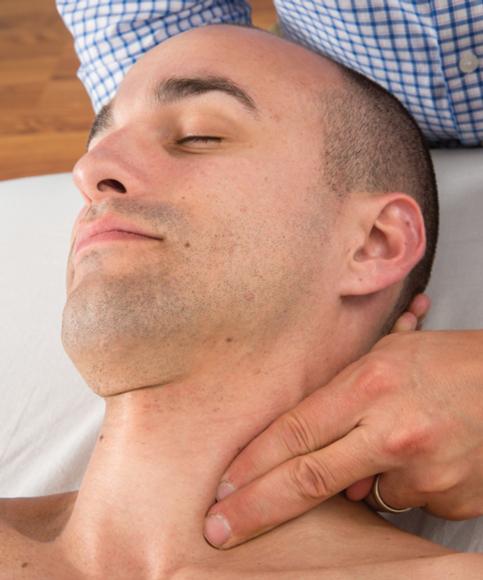Anterior and Middle Scalenes
This is an excerpt from Clinical Guide to Positional Release Therapy With Web Resource by Timothy Speicher.
The anterior and middle scalenes share an anatomical significance and are of critical importance when thoracic outlet syndrome (TOS) is suspected. Because the neurovascular bundle (brachial plexus and subclavian artery and vein) of the cervical spine passes between these two muscles, hypertonicity of these muscles can impinge on the bundle and lead to TOS. Therefore, they are grouped here for examination and exploration.
Origin: Anterior: C3-C6 transverse processes; Middle: C2-C7 transverse processes
Insertion: First rib
Action: Cervical flexion, elevation of the first rib during inspiration, cervical rotation to the same side, cervical lateral flexion to the same side
Innervation: C3-C8 (cervical nerves)

Palpation Procedure
- Place the patient in a supine position, and stand behind the patient's head. Position the anterior scalene under the distal lateral margin of the SCM with the middle scalene just behind the SCM.
- Ask the patient to slightly flex and rotate the head to the opposite side and while tucking under the SCM to gain access to the muscular belly of the anterior scalene.
- Gently strum over the anterior scalene following it inferiorly as it disappears under the clavicle.
- Ask the patient to inspire during palpation to feel its contraction.
- Now move laterally off the anterior scalene onto the middle scalene, which will be broader than the anterior scalene.
- Strum across the middle scalene following it as far as you can up and down its fibers.
- Avoid compressing this juncture when palpating these structures because doing so can cause sharp radiating nerve pain as a result of compression of the neurovascular bundle.
- Note the location of any tender points or fasciculatory response along the muscles and their attachment sites.
- Once you have determined the most dominant tender point or fasciculation (or both), maintain light pressure with the pad(s) of the finger(s) at the location throughout the PRT treatment procedure until reassessment has occurred.

Anterior and middle scalenes palpation procedure.
SHOP

Get the latest insights with regular newsletters, plus periodic product information and special insider offers.
JOIN NOW
Latest Posts
- Sample mental health lesson plan of a skills-based approach
- Sample assessment worksheet for the skill of accessing valid and reliable resources
- Help your students overcome what holds them back from making health-promoting choices
- Example of an off-season microcycle
- Modifying lifts
- Screening for multilevel programs in a team environment


